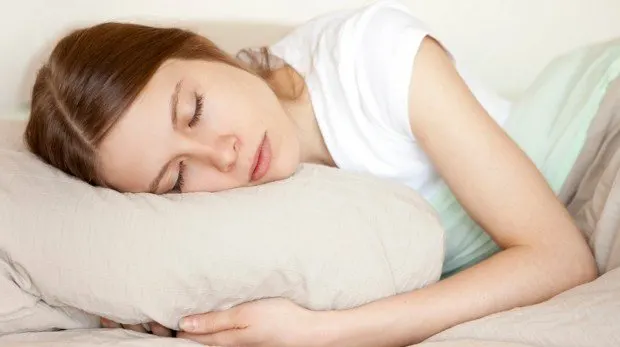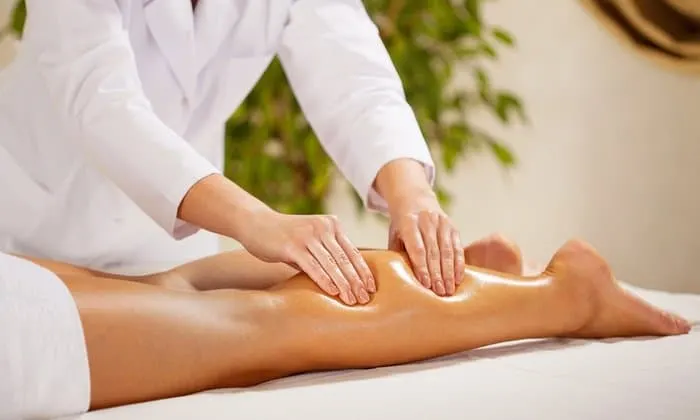- Winkbeds vs Saatva Comparison - June 15, 2021
- Ghostbed vs Leesa Analyzed and Compared - June 9, 2021
- Intellibed Review: Will You Love Its Features? - March 13, 2021
If you have ever experienced intense pain in the lower back or legs area, chances are you are one of the many people who suffer from sciatica or sciatic pain.
There are many individuals who have to face this pain from day to day, but the good news is it can be kept under control. With a combination of medicine, exercises and a good sleeping position, sciatica doesn’t have to ruin your mood.
What Exactly Is Sciatica?
Long story short, sciatica is the irritation of the sciatic nerve. When this process occurs, the body naturally starts feeling pain which can range from mild to severe (and even chronic pain). Sciatica pain is caused by a nerve that’s compressed in the lower spine. While a lot of people will refer to it as back pain, sciatica back pain is a much broader term.
Being the longest nerve in the human body, the sciatic nerve crosses your lower back and goes way down the legs, hence the birth of leg pain as part of this affection.
Medical reports state that about 40% of adults experience sciatica at least once in their lifetime. Its most common sciatica symptoms are leg numbness as far as the nerve stretches and the tingling sensations a lot of us have experienced in our feet and toes. People that suffer from sciatica are more likely to experience intense sciatic pain the longer they sit down.
Best Sleeping Positions
It is no secret that sleeping in an uncomfortable sleep position could make you feel more tired when you get up than you were when you went to sleep. You don’t even have to suffer from sciatica to feel that way. When you’re experiencing lower back pain (sciatic pain), the problems are even further extended. There are several postures that you can try at night to alleviate some of that lower back pain, but be aware that some of these postures may feel slightly uncomfortable.
Back Sleeping
Sleeping on your back is considered to be one of the best positions for your spine. That’s because it helps distribute your weight evenly on the entire surface of your body. Pressure points are kept to a minimum and your shoulders and hips should be aligned.
Assuming you don’t have a snoring problem, this is THE position to try. For even better support, you can place a pillow at the back of your knees. First, lie down on your back, facing the ceiling. Make sure that your head isn’t tilted. Place a pillow that’s smaller than the one you rest your head on, at the back of your knees. If there are gaps between your body and the mattress, fill them with small pillows or invest in a good memory foam mattress.
Side Sleeping
Sleeping on your back is a pretty straightforward deal. But side sleeping has a lot of position-related variations, some of them better than others. This is a position preferred by the majority of the population, although it’s not always the healthiest one, because your spine isn’t always aligned as it should be. However, it’s fairly easy to correct this posture and avoid sciatica pain in the lower back.
The first suggestion for side sleepers implies using a pillow in between the legs. Specifically, as you roll over to the side, place a pillow between your knees, after having pulled them up slightly.
If your sciatica pain is caused by a herniated disc, you can sleep in the fetal position for a higher level of comfort and lower back pain alleviation. When sleeping on the side, bend your knees towards your chest, until you feel that your spine is resting in a straight position.
Stomach Sleeping
This is the most uncomfortable position for your body, even if there are a lot of people who find it appealing. When you’re sleeping on your stomach, you are forcing both your lower back and your neck. Because you can’t just bury your face in the pillow, the stomach sleeper position requires tilting the head left or right to a degree where it puts a great deal of strain on your neck (neck pain). Additionally, your spine is curved to the front.
If you absolutely can’t fall asleep unless you’re lying on your stomach, try placing a small pillow between your forehead and the mattress, so that you can lie head down and still have room to breathe. There should also be a small pillow placed underneath your abdomen so that your hips can be elevated and your spine aligned.
In addition to that, consider using a Tempur-Pedic pillow, but make sure that you pick one that’s the right size for your head. In order to determine the correct position, lie down on your back, with the Tempur-Pedic pillow placed underneath your head.
Ask someone to stand beside you and draw an imaginary line that goes from your ear and all the way down to your knee (assuming you also don’t suffer from knee pain – a possible limitation). If the line is straight, you know that your spine is properly aligned and you’ve found the right pillow size. You can always try to correct your posture by placing pillows between your body and the mattress to achieve the proper position.
Understand What Caused Your Sciatica
Before doing anything else, make sure you consult a doctor to determine the exact cause of your sciatica. There are six common causes of this nerve-related problem (sciatic nerve pain).
- Isthmic spondylolisthesis is a term used to describe a small stress fracture that’s characterized by a vertebral body slipping in front of another. Because of this collapse, the sciatic nerve can get pinched and cause the pain.
- At the bottom of your spine lies the sacroiliac joint which, when irritated, cause a pain that’s similar to sciatica-related pain.
- The lumbar herniated disc is something that occurs when the disc’s inner materials leak and irritates the nerve’s root, leading to nerve pain. This condition is often referred to as a ruptured disc.
- Degenerative disc disease is another cause that irritates the nerve root and can lead to pain. Disc degeneration, however, is a process that naturally occurs inside our bodies as we age, which is why nerve pain can manifest in folks over 50 (fastest growing segement of sciatic suffered demographic).
- Piriformis syndrome is what causes the sciatica pain in your buttocks.
- Lumbar spinal stenosis causes the narrowing of your spinal canal and is one of the most frequent causes for sciatica. This happens as the spine ages and is very common amongst people who are older than 60.
General Sleeping Recommendations
To determine the cause of your sciatica-related pain, a doctor’s consult is mandatory. As he is able to determine the cause, the physician can also recommend the best treatment. Even so, there are a couple of tricks and recommendations that you can take into account if you’re suffering from sciatica and struggle in finding the best sleeping position.
Sleeping Surface
There’s a general belief that people who suffer from sciatica are better off sleeping on a firmer mattress. Instead of changing your regular bedroom mattress for a new one, maybe you can sleep in the guest room for a while. Sometimes, sleeping on the floor with a yoga mat underneath could help.
Some people say it helps alleviate the pain when sleeping on a flat and hard surface, such as the floor. You may experience some discomfort at first, but you should experiment with this technique for a couple of nights before giving up on the idea. In some cases, people have tried sleeping on the couch or on a recliner.
Painful Side
One of the most important tips is to avoid sleeping on the side that hurts. Obviously, some people switch positions a lot during the night, so if you’re one of those people, how can you avoid that? A good solution would be to try and cover yourself with a weighting blanket.
Companies such as Weighting Comforts have developed a special type of blanket that’s heavier compared to a regular blanket. While the concept of this item is to ease anxiety by applying deep pressure techniques, the weight of the blanket will make you think twice about switching positions and make you stick to the one that doesn’t hurt.
Accessories That Might Help
If you’re suffering from sciatica, there are a couple of items that might help you sleep better. Pain-relieving patches are such an item. There’s a lot of controversy surrounding this product, as their utility and quality is often questioned.
However, some of these patches have a lot of positive reviews from people who found they alleviate pain and help them sleep better. Products like Salonpas are designed to provide temporary relief when you’re experiencing pain in your joints and muscles, of up to eight hours for each applied patch. These products contain local analgesics that can ease the pain and provide comfort to those who suffer.
Another method of pain alleviation that people suffering from sciatica turn to is capsaicin cream. For those of you who’ve never heard this term before, capsaicin in the ingredient that makes chili peppers taste hot. As with most ingredients that are plant-based, capsaicin also has a lot of medical utility.
By applying it on your skin, capsaicin blocks the pain transmitted to your nerves. Creams that are based on this ingredient are often used to relieve sciatica pain, but also joint conditions, fibromyalgia, muscle sprains, and even severe types of headaches. Capsaicin is generally available in cream or patch form. While you don’t need a medical prescription for it, a lot of physicians will recommend it as part of a patient’s treatment.
A good neck pillow can also go a long way in helping soothe some of that nasty sciatica pain (in addition to mitigating neck pain from overcompensating in other ways). Have you ever experienced pain in a particular area and somehow felt that it traveled through your entire body? When you sleep with a pillow that’s too fluffy, it can crank up your neck and you won’t get the support your body needs. If your upper spine is kept in a proper position, it can help reduce pain experienced in the lower back area.
Ice
As silly as it may sound, something as basic as a pack of ice can help alleviate pain. There are a lot of doctors that recommend icing sore spots as part of your evening routine, just before jumping into bed. A pack of cold ice applied on your lower back area can reduce both swelling and pain.
The bad is news, you’ll have to repeat the process every day, for about twenty minutes. However, you should consult with your physician before doing so, as he may recommend a more personalized duration so that you can get the best results.
Exercises
When you suffer from sciatica, your sleeping position is very important, but it’s not the only thing to look after if you want your life to be as pain-free as possible. It’s not just about the sleep; you need a more drastic change of lifestyle. A couple of daily exercises could go a long way and they shouldn’t even take you more than 20-30 minutes. Remember that sciatica is a muscle-related problem, so a little bit of stretching can do a lot of good on the long run.
There are a lot of simple stretches that you can do in the comfort of your own home and all you need is a yoga mat and maybe some good music. One of the easiest stretches is the child’s pose.
By standing on all fours, spread your knees while making sure your big toes touch the ground. Your belly should be resting between your thighs, while your forehead should touch the floor. Then, stretch your arm above your head, with your palm touching the floor. This position can go a long way in alleviating back pain.
The standing twist is another simple stretching exercise that requires a chair. Place either your left or right foot on the chair, keeping the rest of your body in a standing position. Then, slowly inhale and twist your body to the right and place your left hand on your right thigh. While doing so, make an effort to lengthen your spine. Hold your position for about ten seconds, then switch legs and repeat the process.
Massages
A study published in 2014 in the Scientific World Journal revealed that deep tissue massages can be as efficient in alleviating lower back pains as the drugs manufactured to do so.
When it comes to sciatica, a massage has two benefits. First, it can help reduce muscle tension and prevent them from putting extra pressure on your nerves. A massage can also stimulate your body in releasing endorphins. These are body chemicals responsible for pleasure and pain relief.
A deep tissue massage is an aggressive massage form. With slow strokes, the masseuse will apply deep finger pressure to help release muscle tension. Neuromuscular massages imply more advanced techniques that use friction to release contracted muscles.
If you’re looking to get the best sciatica massages, the best idea would be to find a massage therapist. You can ask your doctor or your friends and family for a recommendation.
Conclusion
The best sleeping position for sciatica pain needs to be combined with exercise, proper sleep hygiene, and maybe several other items that can help soothe the suffering. Starting with a warm shower, a few minutes of stretching and a bunch of pillows that can help relieve the pressure felt in the sciatic nerve are all ingredients towards getting a better night’s sleep and getting rid of the pain that’s burdening your life.








